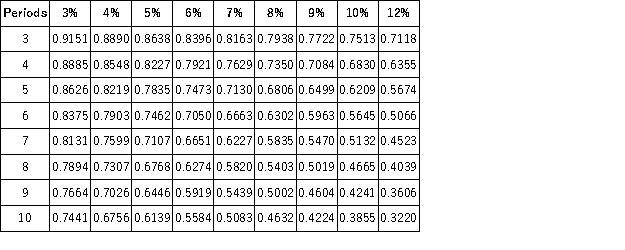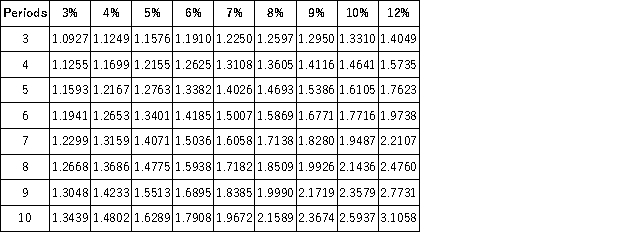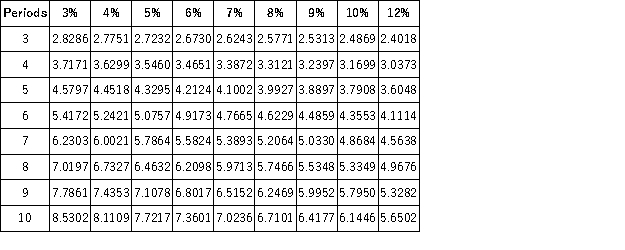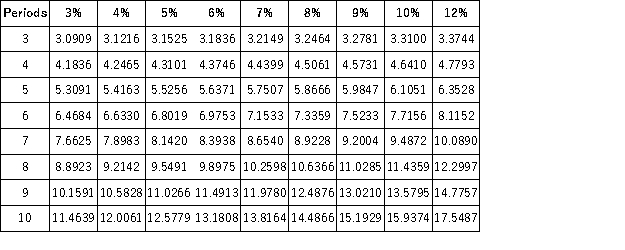Present Value of 1  Future Value of 1
Future Value of 1  Present Value of an Annuity of 1
Present Value of an Annuity of 1  Future Value of an Annuity of 1
Future Value of an Annuity of 1  A company is setting aside $21,354 today, and wishes to have $30,000 at the end of three years for a down payment on a piece of property. What interest rate must the company earn?
A company is setting aside $21,354 today, and wishes to have $30,000 at the end of three years for a down payment on a piece of property. What interest rate must the company earn?
Definitions:
Financial Statements
Formal records of the financial activities and position of a business, person, or other entity, typically including a balance sheet, income statement, and cash flow statement.
Closing Entries
Journal entries made at the end of an accounting period to transfer temporary account balances to permanent accounts.
General Ledger
A complete record of all financial activities conducted by a company throughout its existence.
Post-closing Trial Balance
A financial statement listing all accounts and their balances after closing entries are made, ensuring that debits equal credits.
Q1: A client is receiving 100 mL of
Q2: Type: Exhibit <img src="https://d2lvgg3v3hfg70.cloudfront.net/TB3601/.jpg" alt="Type: Exhibit
Q14: A client with heart failure is prescribed
Q15: Barber and Atkins are partners in an
Q15: Present Value of 1 <img src="https://d2lvgg3v3hfg70.cloudfront.net/TB6316/.jpg" alt="Present
Q52: Long-term investments in available-for-sale securities are reported
Q94: Lemon and Parks are partners. On October
Q98: Pat and Nicole formed Here & There
Q137: Cox, North, and Lee form a partnership.
Q164: Henry, Luther, and Gage are dissolving their